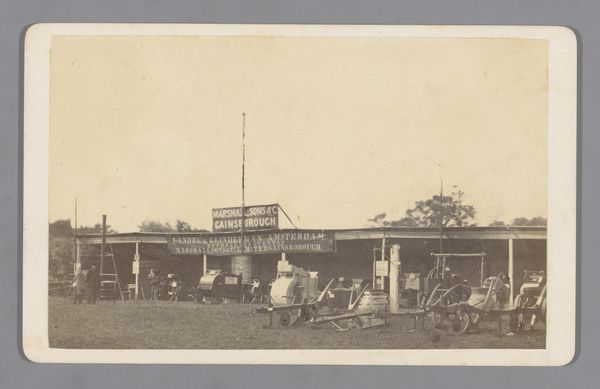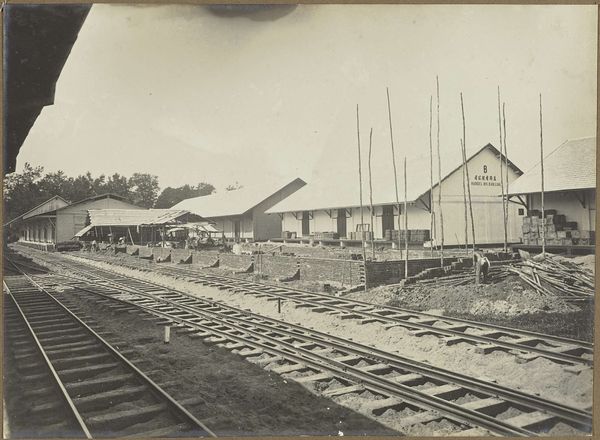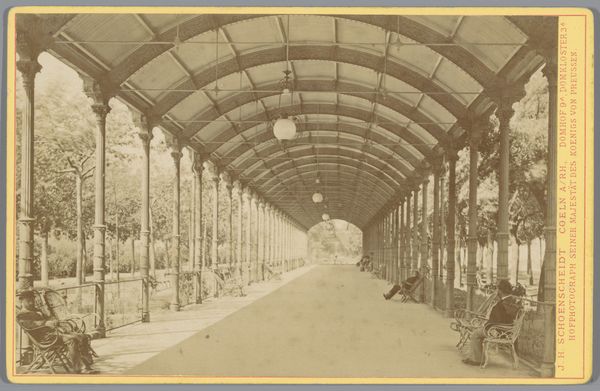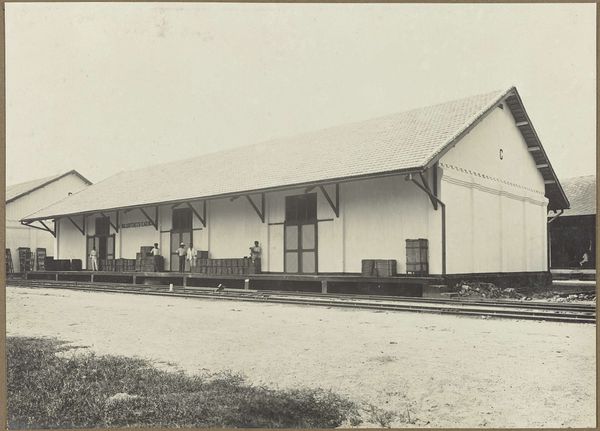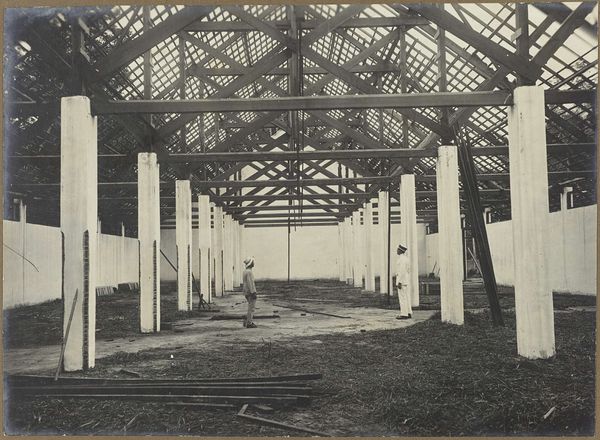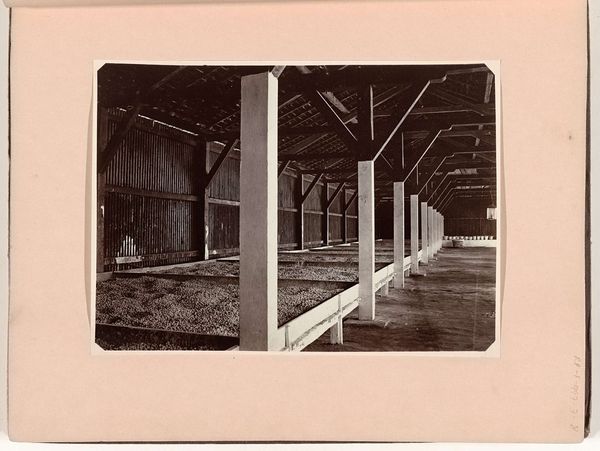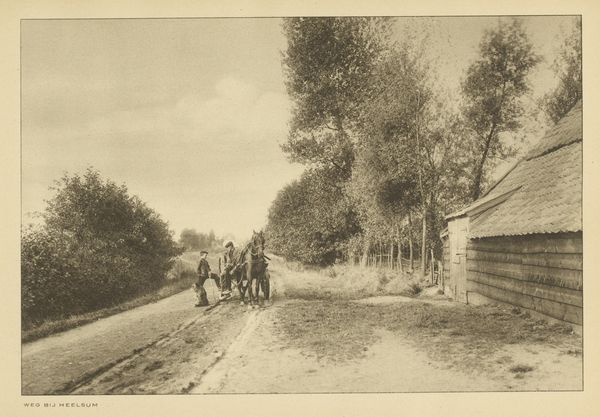
photography, gelatin-silver-print
#
aged paper
#
landscape
#
archive photography
#
photography
#
historical photography
#
gelatin-silver-print
#
modernism
#
realism
Dimensions: height 90 mm, width 121 mm
Copyright: Rijks Museum: Open Domain
Curator: Here we have an intriguing gelatin-silver print simply called "Fietsenrek van de Prinses Juliana School," or "Bicycle Rack of the Princess Juliana School," dating back to 1933 and captured by an anonymous photographer. What's your take on it? Editor: It feels like a sepia-toned dream, all repeating lines and cycles—bikes neatly stowed. Almost hypnotic. It hums with a quiet, everyday rhythm, don't you think? Like the essence of mornings before the bell. Curator: Precisely. The anonymous nature invites reflection on the ordinary: rows of bicycles become a landscape of labor and access to education. The repetitive geometry created by the bikes and wooden structures reveals a very modernist sensibility shaping social life. Editor: True, and consider this: each bike a silent character in a grander story. Who rode them? Were they dreaming of sums and poems? Or, were they just itching for playtime? One helmet sits there waiting like a still life focal point. Curator: Good point. I find the uniformity striking. Think of the standardization of bicycle production in the early 20th century. This image also speaks to accessibility and equity. Bicycles become almost democratizing vehicles of knowledge in the lives of students. Editor: It does. But it's a stark beauty. Those identical lines also feel oddly lonely, despite the density of bikes—a mass of individual journeys temporarily paused, right? Or, imagine the clatter when classes let out. A wave of youthful exuberance pedaling toward home... Curator: You’re right. Even in the order there’s an underlying energy. I keep thinking about how it highlights urban planning, mobility and social participation in the 1930s, things easily overlooked today. Editor: Well, I am left now with an appreciation of the art within the quotidian, which is an exceptional takeaway I must say. What do you think, have we exhausted our tires with the chat here? Curator: Quite possibly. I now see these humble bikes as testaments to social and industrial transformation.
Comments
No comments
Be the first to comment and join the conversation on the ultimate creative platform.
